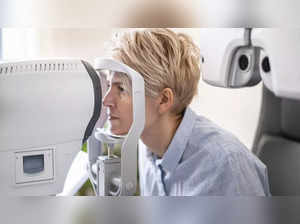 Agencies
AgenciesBudget with ET
Study highlights retinal-brain connection
The study indicates that the vascular network in the retina closely resembles that of the brain. Researchers say a simple retinal scan can assess the health of retinal blood vessels to identify potential risks to the brain’s vascular system. This involves analyzing features such as length, diameter, density, and branching of the retinal veins and arteries.Research data and findings
The study analyzed health data of 45,161 individuals over 55 years old, collected through the UK Biobank study. Over a follow-up period of 12.5 years, 749 participants experienced strokes. The affected individuals were generally older, male, smokers, and had conditions such as diabetes, high blood pressure, and low levels of “good” cholesterol—all recognized stroke risk factors.Upon reviewing retinal images, researchers identified specific changes linked to a higher stroke risk. These included increased arc length and chord length of retinal blood vessels, as well as alterations in vessel calibre, such as diameter and ratio.
Implications for stroke prevention
The study’s findings highlight the potential of retinal scans as a non-invasive tool for early stroke risk assessment. Further research could pave the way for integrating such scans into routine health check-ups to identify and address stroke risks before symptoms arise.(Catch all the Business News, Breaking News, Budget 2024 Events and Latest News Updates on The Economic Times.)
Subscribe to The Economic Times Prime and read the ET ePaper online.
Read More News on
(Catch all the Business News, Breaking News, Budget 2024 Events and Latest News Updates on The Economic Times.)
Subscribe to The Economic Times Prime and read the ET ePaper online.









































 Get Unlimited Access to The Economic Times
Get Unlimited Access to The Economic Times
